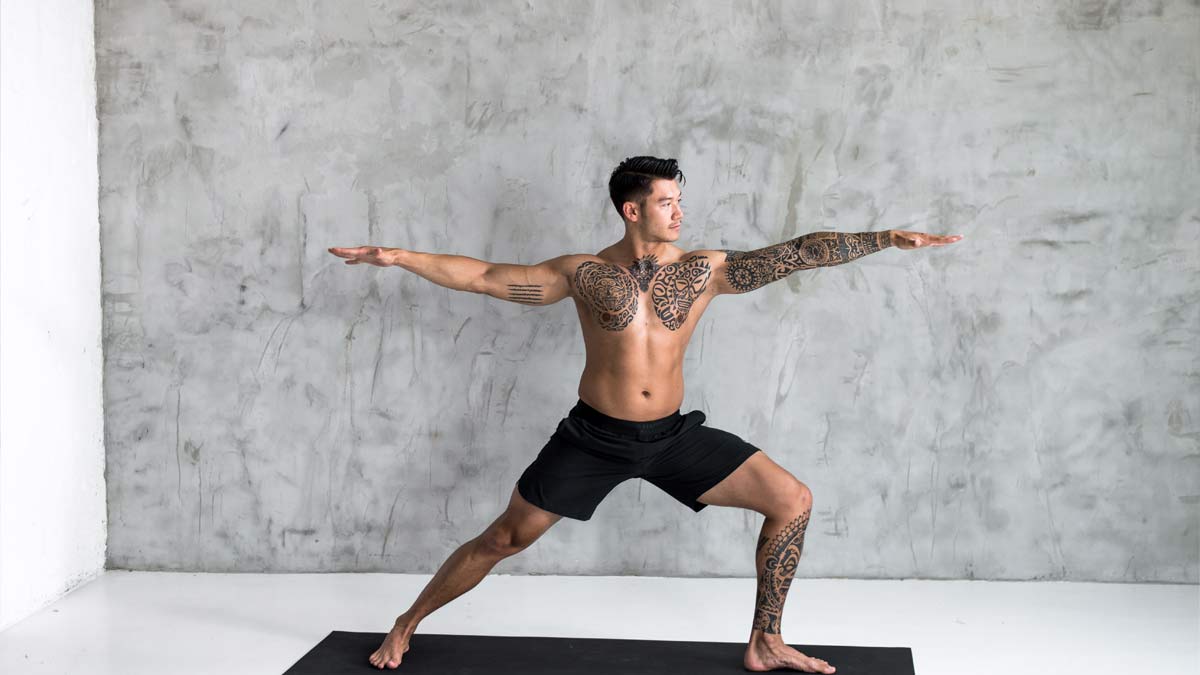
There are many styles to yoga, including Ashtanga Vinyasa Power, Vinyasa and Restorative. This article will help you to decide which style suits you best. This article will help guide you in choosing the right pose for your needs. You can find many benefits in each one, so make sure to try them all. You may even discover a new one you've never heard of!
Ashtanga
There are many different Ashtanga yoga styles. Each one focuses primarily on a different aspect. The Ashtanga sequence concentrates on breathing and physical postures. Through yoga, the goal is to reach a constant state of bliss. Although Ashtanga is considered a more dynamic style, its core principles are the exact same.
Sri K. Pattabhi Jois is the principal instructor of this style. He is one of the most revered sages in the history of yoga. Sharath Rangeaswamy, his great-grandson continues the tradition of his grandfather and teaches this style. The Ashtanga style is also based on the sacred text Yoga Korunta, which was written by Patanjali. According to some, Ashtanga Yoga is the eight-fold path of yoga.
Vinyasa
Vinyasa style is the most commonly practiced among all yoga styles. This type of yoga blends movement and breathing to offer flexibility to all levels. This dynamic practice can be tailored to suit specific needs. It can help you develop flexibility in your lower body or improve posture and muscle tone. You will find it improves flexibility, self-esteem, as well as improving your body image. For a quick overview of both styles, please continue reading.

The primary difference in Hatha and Vinyasa styles is the physicality. Hatha styles tend to be more energetic and require greater concentration. Hatha style yoga emphasizes proper alignment of bones, muscles and the skin. These postures also open many channels in the body, including the sushsumna nadi. These pathways let energy flow more freely throughout the body. Hatha yoga, a challenging and vigorous form of yoga, is therefore very popular.
Power yoga
Power yoga may be more vigorous than other meditative styles but some experts believe it offers the same benefits of psychotherapy. These benefits include improved quality sleep and reduced stress. Many studies have even suggested that it could reduce the negative effects of depression or other mental illnesses. Power yoga's repetitive and intense movements demand a high level of mental discipline. Power yoga also requires physical fitness. Power yoga can be a great form of exercise. However, not everyone is able to do it.
Surya Namaskar is the foundation of most power yoga classes. These classes move quickly through advanced poses. There is usually very little time between poses, and the transition into a relaxed state. Power yoga also does not include a deep relaxation pose called Savasana. While power yoga poses are more difficult than other styles of yoga, beginners should first try an intro class. Regardless of the style you choose, there are a few key differences between power yoga and other styles.
Restorative yoga
The practice of yoga can stretch the body, but restorative yoga styles offer a different experience entirely. In restorative yoga styles, you sit in poses without moving for a short period of time. The poses can last anywhere from five to 20 minutes. You will experience a decrease in stress and blood pressure through restorative yoga. There are many health benefits to restorative practice yoga. It's worth it.
The wall position is one of the best yoga poses for relaxation. As you sit in the wall pose, your legs are raised and relaxed. You can keep the pose for anywhere from five minutes to ten, and you can add any leg variation. You will get the best results if you find a spot that is near a wall. To support your lower back, you can use a pillow or bolster. Stretch your back and relax your muscles.
Iyengar yoga

The Iyengar family's teachings are deeply rooted in the Patanjali yoga sutras, which are over 2,500 years old. B.K.S., a dedicated student and practitioner of the Iyengar methodology, developed the Iyengar way. Iyengar over seventy years. It emphasizes correct alignment in every pose.
Iyengar Yoga begins with standing postures. This builds balance and strength, as well as improving circulation. The student begins their journey by learning how to do the shoulder stand. Next is the headstand. Finally, they will need to learn how the back bends and the headstand. Intermediate and advanced students will learn pranayama exercises, and then they will explore the twists and backbends. Iyengar yoga is good for your overall health, regardless of your age and physical condition.
FAQ
How can I prevent my mental health problems from happening?
Preventing mental disorders is easy. Here are some tips:
-
Don't drink alcohol. Alcohol can affect your moods and increase your risk of depression.
-
Avoid drugs. Drugs can cause brain damage and worsen your symptoms.
-
Get enough sleep. You can feel anxious or depressed if you don't get enough sleep.
-
Exercise regularly. Exercise can release endorphins, which make you happy.
-
Eat healthy foods. Junk food can make you feel lazy and unwell.
-
Spend quality time spending it with loved ones. It can be a great way to improve your mood.
-
Have fun. Have fun!
-
You should take breaks from social media. Social media sites can make it difficult to feel alone and lonely.
-
Be kind to yourself. Treat yourself nicely, even if you aren't feeling great.
-
Ask for help. Ask for help if you are having difficulty coping. Talking with a friend or family member is a great way to get help.
-
Remember that it's okay to cry. Crying helps to relieve tension and stress. It doesn't necessarily signify that something bad has happened.
-
Keep busy. Try doing something you enjoy.
-
You should practice good hygiene. Bad hygiene can make it difficult to feel attractive and clean.
-
Stay connected. Staying connected with others can help you remain positive.
-
Learn how relaxation works. Relaxation techniques like yoga and meditation can help you cope better with stress.
-
Find meaning and purpose in what you do. Finding purpose in your job and hobbies can bring you satisfaction.
-
Keep your eyes on the present moment. Concentrate on the present moment and you won't be so worried about the distant future.
-
Set goals. You can set goals to motivate yourself to reach them.
-
Do something nice for you. Being kind to yourself can help boost self-esteem.
-
Practice gratitude. Gratitude can help to appreciate all the blessings in your life.
-
Volunteer. Volunteering can be a fun way to make a difference and spend your time.
-
Give back. Giving back to others can make it feel fulfilling.
-
Be alert for warning signs. You should be aware of warning signs and reach out for assistance if you notice any changes.
What causes mental health problems in adolescents?
Adolescence is when we develop our identities. As individuals, we start to understand who we are and where we fit in the society.
During this time, we also develop new friendships and romantic relationships. These experiences can cause stress.
While stress is normal, you should seek out help if your stress levels are higher than usual.
You may believe that you can manage everything yourself, but sometimes it's better to have someone to talk with.
During times of stress, friends and family members can offer support. They can also help you learn ways to deal with stress.
You could try meditation or exercise. Both can reduce stress.
You could also join a church or sports team. You'll meet new people, make new friends.
What can you do if you are experiencing mental health issues
It is vital to seek support if you are experiencing any mental health problems. Perhaps you've been through trauma or suffered abuse in the past. It's possible that this has affected how you think about yourself.
You might also have an eating disorder, addiction or other type of mental illness. These disorders can cause significant damage to your personal and professional life.
You should not attempt to resolve them by yourself. Instead, you should talk to someone who knows what they're doing. These challenges can be overcome with the help of a professional therapist.
Statistics
- According to the National Alliance of Mental Illness (NAMI), one in five Americans experiences mental health issues which translates to more than 40 million adults a year. (doctorondemand.com)
- More than 40 million adults in the United States have an anxiety disorder, but less than 37% of people seek mental health treatment for their symptoms. (talkspace.com)
- It means no drinking any alcoholic beverages and no taking any drugs that aren't 100% natural.
- More than 50% will be diagnosed with a mental illness or disorder at some point in their lifetime.3 (cdc.gov)
- In any given year, an estimated 18.1% (43.6 million) of U.S. adults ages 18 years or older suffered from any mental illness, and 4.2% (9.8 million) (healthypeople.gov)
External Links
How To
How to Care For Autism Children
Autism spectrum disorder (ASD), which is a neurodevelopmental disease, causes repetitive behaviors and social impairments. ASD affects 1 in 50 people worldwide. However, there are no treatments.
Around 18 months, the first signs usually start to appear in infancy. The most common signs include difficulty understanding others' emotions, lack of eye contact, problems with language development, and difficulties in learning new skills. These symptoms can sometimes lead to serious behavioral issues such as self-injury, aggression, anxiety, depression, and sleep disturbances.
While there is no cause currently, scientists believe that genetics play an important role. ASD can be caused by environmental factors, such as infection, stress, diet, medications, vaccines and alcohol. There is also evidence suggesting that certain viruses like rubella and measles can increase the risk of developing ASD later in life.
Although early diagnosis and intervention can help improve outcomes, many families struggle with their child's behavior after they reach school age. Different treatment options are available depending on the severity and type of the problem. However, research has shown that treatments that emphasize social interaction and reduce problem behavior can make some difference.